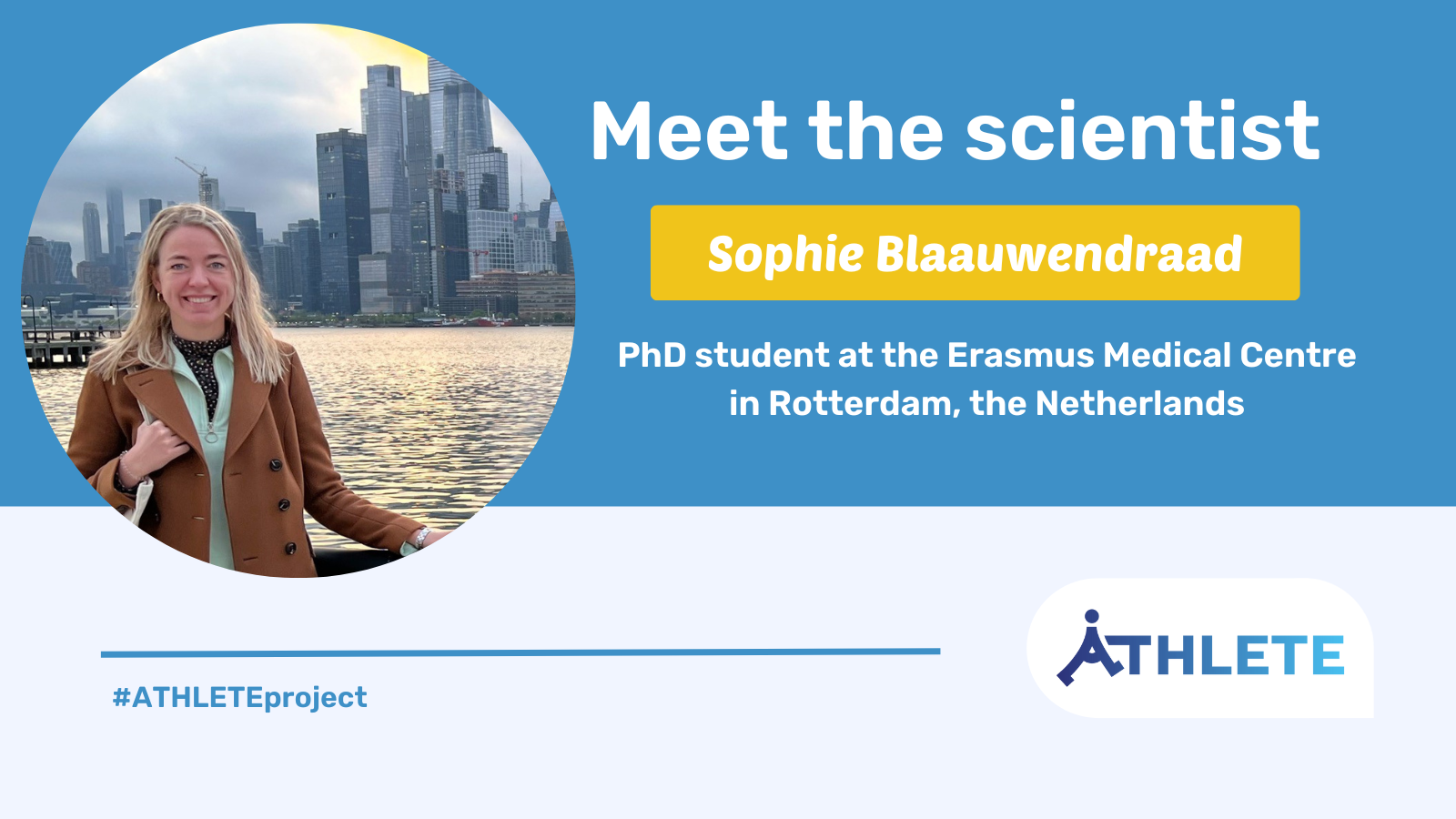Through ATHLETE’s Fellowship Programme, early-career researchers working on the human exposome are given the opportunity to collaborate with other consortium partners around the world. We sat down with Sophie Blaauwendraad, PhD student at the Erasmus Medical Centre in Rotterdam in the Netherlands, to talk about her recent fellowship run with Professor Leonardo Trasande at the New York University (NYU) School of Medicine.

Fellow profile: Sophie Blaauwendraad is a PhD student at the Erasmus Medical Centre in Rotterdam, the Netherlands. Her interest – and subsequent field of expertise – is people’s exposure to endocrine disrupting chemicals (EDCs) during preconception and pregnancy, and how this exposure may impact children’s health. Within the ATHLETE project, Sophie contributes to work package 5, which researches the in-utero exposome and early organ development.
Hosting institution: Leonardo Trasande is from the New York University (NYU) School of Medicine, Langone Health, department of environmental paediatrics. Professor Trasande is an internationally renowned specialist in children’s environmental health: his research focuses on identifying the role of environmental exposures in childhood obesity and cardiovascular risks, and documenting the economic costs for policy makers of failing to prevent diseases of environmental origin in children proactively. In the ATHLETE project, he sits on the external advisory board as an expert on paediatrics, cohort research, and impact assessment.
Dr. Trasande is known globally for his work on documenting the economic benefits for policy makers to regulate endocrine disrupting chemicals. EDCs are a broad category of substances widely used in consumer products, electronics, and agriculture, and have been associated with a diverse array of health impacts that include infertility, cancer, birth defects, and metabolic disease. Through his research, he identified the health effects from exposure to these EDCs cost the European Union 157 billion euros each year.
Sophie, what is your research focus in the ATHLETE project?
Within the ATHLETE project, I research how exposure to chemicals like bisphenols and phthalates during pregnancy may impact children after birth and into adulthood. Bisphenols and phthalates are groups of non-persistent endocrine disrupting chemicals (EDCs), which are substances that are not naturally produced by the human body and that can disrupt the normal functioning of our hormone system. Both chemical groups are widely used in all sorts of consumer products: bisphenols are regularly used in metal cans, toys, and thermal paper, while phthalates can be found in vinyl plastic floors, food wrappings, shampoos, cosmetics, and other personal care products.
Due to their widespread use in society, pregnant women are frequently exposed to these endocrine disruptors. And this is worrying: research has shown bisphenols and phthalates can pass through the placental barrier, causing direct fetal exposure. The fetal period is a time of high cell turn-over and fast organ development, leading to higher vulnerability to adverse environments. Exposure to bisphenols and phthalates during this time might cause permanent alterations to certain structural and physiological functions of the fetus. Such programmed changes during this critical period might predispose the fetus to cardiovascular and metabolic diseases in later life.
In my research, my primary objective is to explore the potential links between increased fetal exposure to bisphenols and phthalates and their impact on children’s health. To accomplish this, we measure bisphenol and phthalate concentrations in maternal urine during pregnancy, and subsequently monitor the development and health of the children of these mothers from the prenatal stage all the way through to adulthood.
How did you choose your fellowship placement and what did you do during your fellowship?
The NYU Langone Health department of Environmental Pediatrics is known globally for its high-quality research team consisting of renowned experts in the field of environmental epidemiology and child health. Working in this unique setting gave me the opportunity to gain valuable research skills in the field of non-persistent endocrine disrupting chemicals. As part of my fellowship placement, I was especially excited to explore the data collected by NYU Langone’s Children’s Health and Environment Study (CHES). This study, led by Professor Leonardo Trasande, examines the helpful and harmful effects of environmental exposures on children’s health and development.
During my fellowship, I participated in data analysis and research meetings of the CHES cohort, where I discussed questions about and results from my research. This allowed me to deepen my knowledge about the different research phases, such as study design, data collection, data cleaning, and data analysis.
What are the next steps in your research work under the ATHLETE project and what are you looking forward to?
My next step within the ATHLETE project is to perform two meta-analyses among six European cohorts from the UK, France, the Netherlands, Spain, and Greece, to explore the effects of exposure to endocrine disruptors on child health on a European level. I am especially looking forward to performing these multi-cohort analyses, and applying the analytical skills I learned during my fellowship placement at NYU to my future projects within ATHLETE.
The ATHLETE consortium is unique in its magnitude and diversity of participants, and performing analysis within these cohorts will help explain the potential adverse health effects of prenatal bisphenol and phthalate exposure. This knowledge can support the development of effective EU policy on endocrine disrupting chemicals to protect health, and help list lifestyle recommendations for expectant or pregnant couples.
For further reading, please visit:
- Mose T, Knudsen LE, Hedegaard M, Mortensen GK. Transplacental transfer of monomethyl phthalate and mono(2-ethylhexyl) phthalate in a human placenta perfusion system. Int J Toxicol. 2007 May-Jun;26(3):221-9. doi: 10.1080/10915810701352721. PMID: 17564903.
- Nahar MS, Liao C, Kannan K, Harris C, Dolinoy DC. In utero bisphenol A concentration, metabolism, and global DNA methylation across matched placenta, kidney, and liver in the human fetus. Chemosphere. 2015 Apr;124:54-60. doi: 10.1016/j.chemosphere.2014.10.071. Epub 2014 Nov 27. PMID: 25434263; PMCID: PMC4297568.
- Philips EM, Jaddoe VWV, Trasande L. Effects of early exposure to phthalates and bisphenols on cardiometabolic outcomes in pregnancy and childhood. Reprod Toxicol. 2017 Mar;68:105-118. doi: 10.1016/j.reprotox.2016.08.015. Epub 2016 Sep 3. PMID: 27596818; PMCID: PMC5336527.